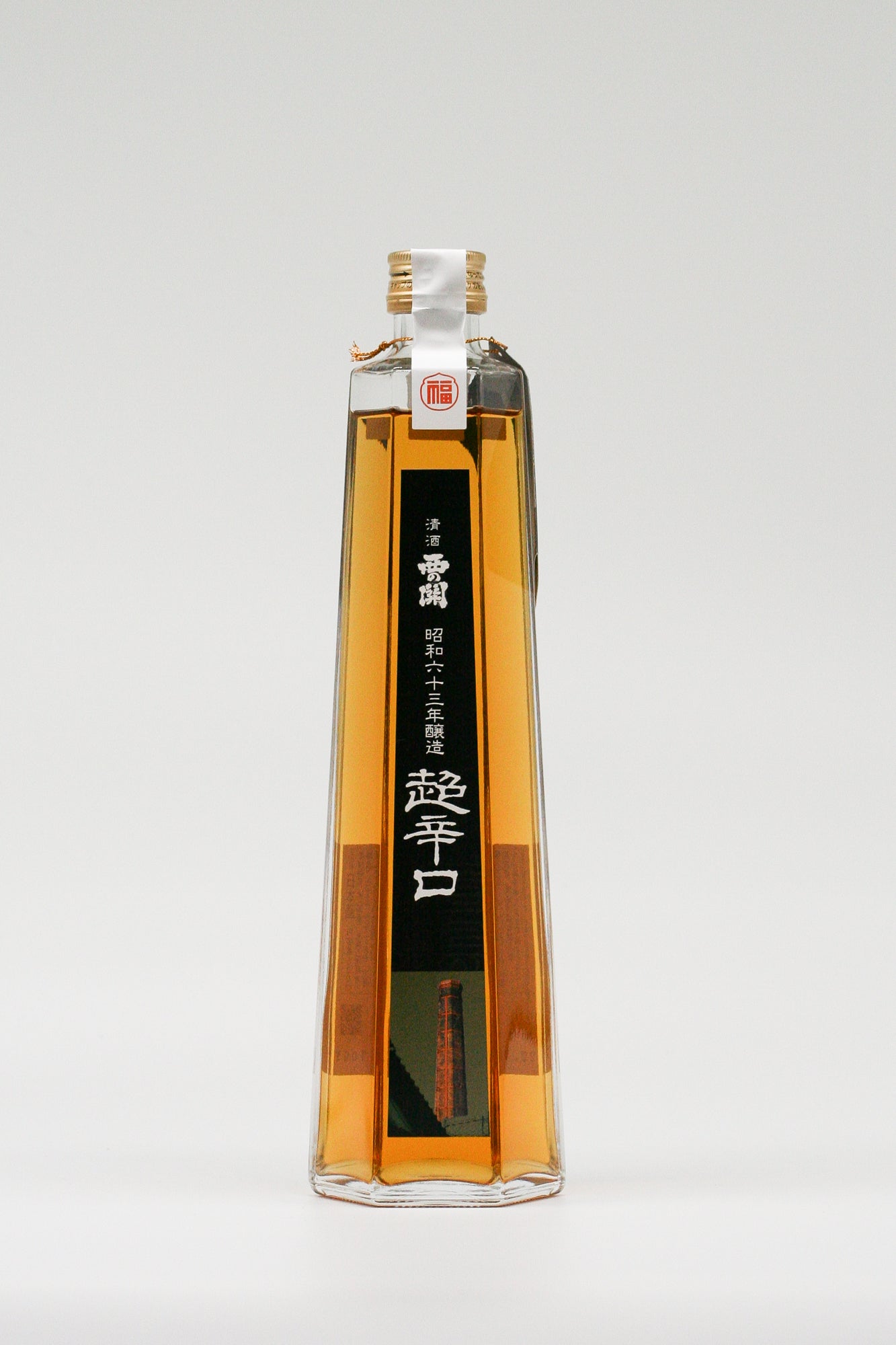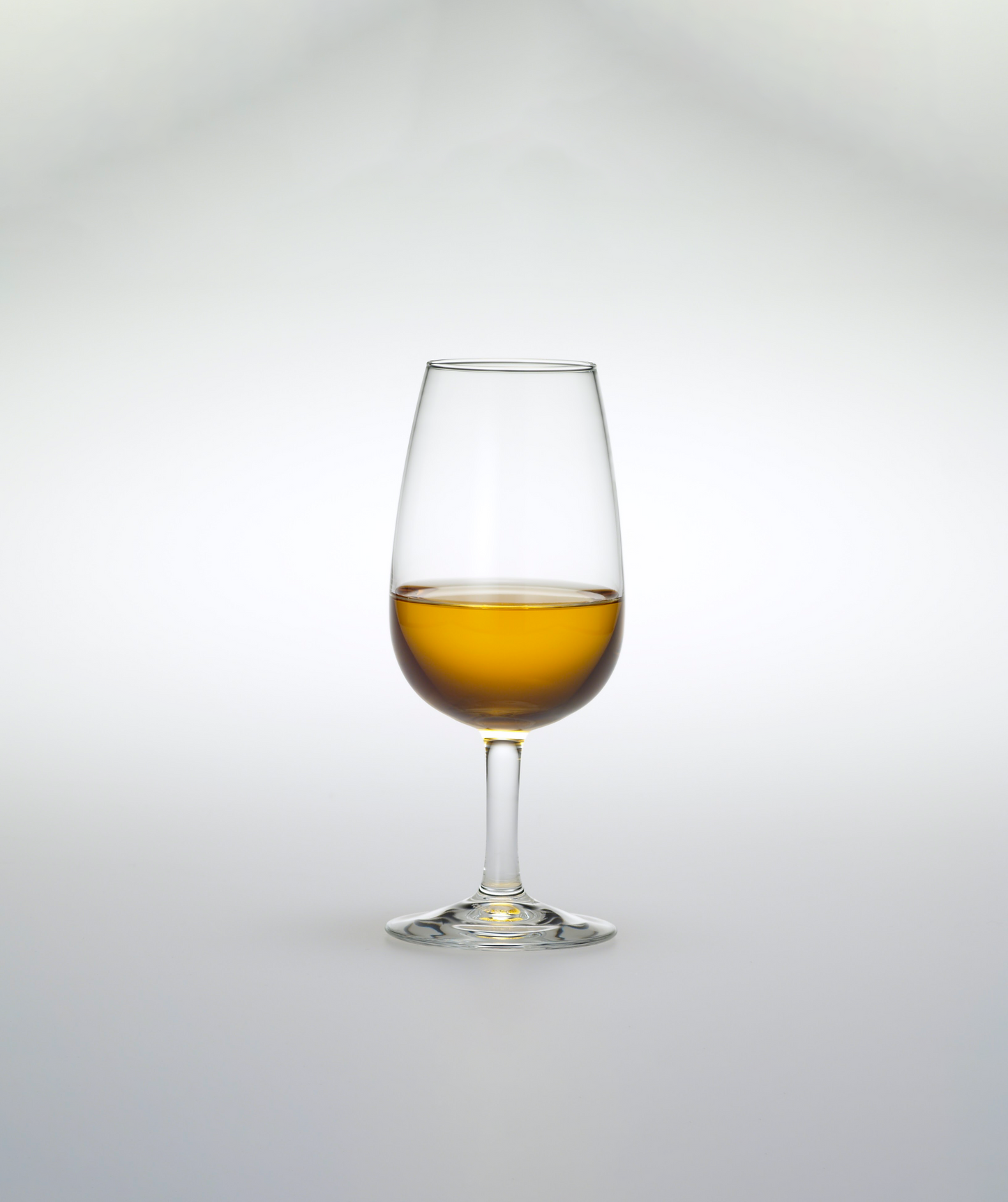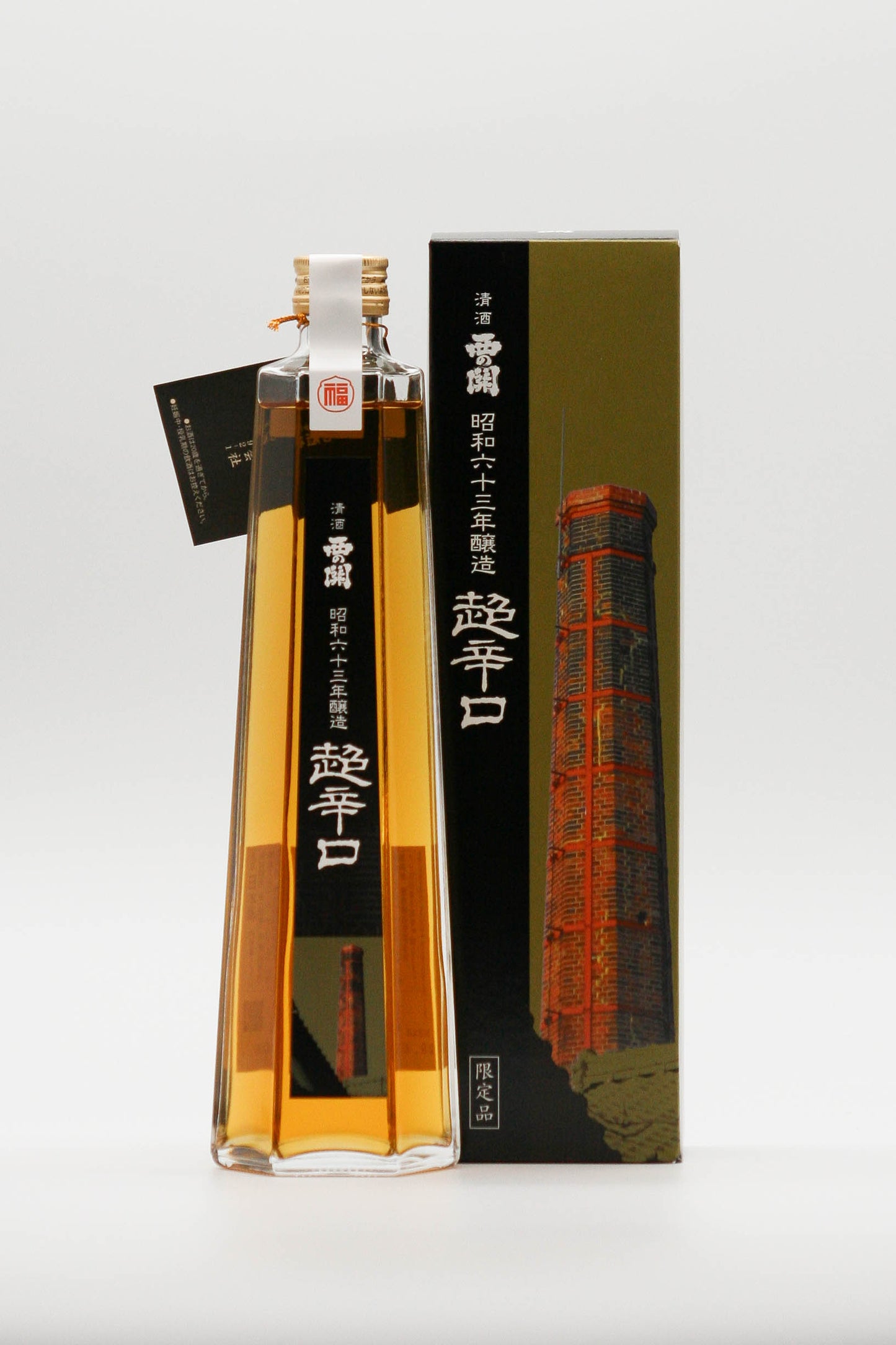


It is a deep sake with a sweet aroma and rich flavor, and then becomes crisp and firm.
Aged sake Super-Karakuchi since 1988
| Vintage | 1988 |
| Years aged | 35 years |
- 10 years or more
- 1980s or before
- All Products
- Golden yellow
- Less than 5,000 yen
- Throughout the meal
- With dessert and/or as an after-dinner drink
- Brewer:
- Alcohol:17 degrees
- Volume:500ml
Couldn't load pickup availability
[ Drinking alcohol under the age of 20 is prohibited by law. ]
This sake was brewed in 1988, or 1988 .
There was a long period when most of the sake and soy sauce consumed in Kyushu was sweet. Taking this into account, it becomes clear why this mellow and well-balanced alcoholic drink was named ``super dry''.
The long aging process brings out the mellow flavor and flavor, making it a drink that can be enjoyed in a wide range of ways, from a variety of dining situations to drinking alone.
- about
-
Type 本醸造 Rice polishing ratio - Yeast type - Ingredients/raw materials Rice (domestic), rice malt (domestic), brewed alcohol Rice type - Origin of rice - Toji(Brew Master) - Assemblage No
- Recommended occasions/temperature
-
- How to store
-
- Delivery dates and charges
-



Tasting comments
-
Nobuhiro Ueno
(Mature and Warm Bar Master / Toki SAKE Association Executive Director)Gentle and soft caramel aged aroma with a slight nickel. Chamfered by the passage of time, it is extremely well-balanced and unobtrusive. Aged enough to keep drinking.
The aftertaste is not strong, but it is pleasant and dissolves neatly.
-
Hidekazu Ishiwata
(Former National Tax Bureau Chief Appraiser)Beautiful bright yellow. The scent is sweet at the top.
The sweetness of sotolon and caramel aroma. Attack is strong.
Slightly sharp acidity and alcohol give it a sharp and firm feel.
-
Akiko Toda
(Director of ITTEKI, Japan Sake and Meat Research Institute)Gold to amber color.
A slightly smoky scent with hints of apricot and fig. It enters the mouth smoothly, with just the right amount of sweetness, and the bitterness tightens in the second half.
It would be interesting to pair it with dishes using mushrooms, especially porcini mushrooms. -
Yuji Yamauchi
(Yushima Tenjinshita Sushi Hatsu 4th generation / 1st JSA SAKE DIPLOMA competition winner)The caramel feel, swelling, and alcoholic feel are well balanced, allowing you to experience a ``smooth and fragrant'' experience. A masterpiece that you will want to take your time to enjoy.
Brewer
- Choosing a selection results in a full page refresh.
- Opens in a new window.



